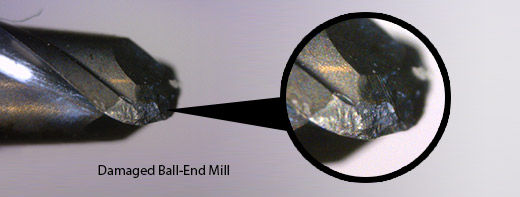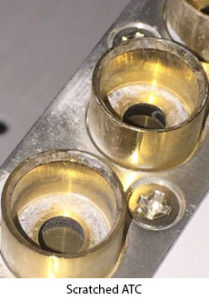In the third of our "quick tip" dental blog posts, Roland DGA Group Product Manager and Dental solutions expert, Brian Brooks, offers essential tips for dental milling machine owners about the proper care for your diamond coated tools.
Taking Care of Your Diamond-Coated Tools
End-mills, burs, tools... whatever you call them, these fragile and extremely precise instruments should be handled with care.
Milling dental prosthetics can sometimes be frustrating when it comes time for final quality assurance. Tight tolerance fittings and surface quality are becoming ever so important within an industry that measures in microns and photographs with macro lenses. I had a very interesting conversation with a representative of a major tool manufacturer a couple of months ago. We were trying to figure out why we were seeing different results in restorations that a lab had asked us both to examine. After checking the CAD design, CAM toolpath and calibration of the machine, as well as the material and tools, everything seemed to check out.

Treat Your Tools with Kindness
That left us scratching our heads. To make a long story short, after performing some additional checks, we found the culprit. We discovered that, when technicians place new tools into a machine’s automatic tool changer, they don’t always handle them with care. After looking at a number of machines and several sets of tools from various labs, we started to notice very light, seemingly non-relevant scratches around the hole where the tools rest when seated in the ATC (see image above). Further research showed that, when tools were manually loaded in the machines, users were striking the fragile tips of those tools while loading them into the ATC. After taking some high-resolution macro photos, under very high magnification, we noticed that both the plating blades of the tools were being damaged. Because most people think of end-mills as being very strong, users typically don’t treat them like the high precision instruments that they are. Just as a surgeon wouldn’t throw his surgical instruments around in the operating room, users need to treat these fragile dental tools delicately.
Precision Instruments need Precision Care

The main message I want to get across is how important it is to take proper care of your burs, tools, end-mills – whatever you want to call them. These precision instruments are expensive and fragile, and they need to be treated as such. Installing the magnetic collars and loading the tools into a machine should be handled with extreme care. Even the smallest nicks and scratches will absolutely affect the quality of your milled restorations. They can also cause the blades of the flutes to wear unevenly, considerably shortening the life of the tool. When milling zirconia, we rely on the diamond plating to battle the abrasive nature of the material. It’s not so much the hardness of the material itself that makes this plating important, but rather the fact that it protects the steel and carbide skeleton located below it.
Good Rule of Thumb
A good rule of thumb is to ensure that the end of the tool never touches anything besides the material being milled. Unfortunately, it’s necessary to load tools into machines from time to time, and this operation is still a manual process. However, by treating these precision tools with care and respecting their fragility, you can extend the life of these instruments and ensure optimum performance for perfect restorations time and time again.
More in this series of quick tip posts:
Dental Milling Tips & Tricks – Tip 1. Choosing The Best Tools for the Best Results

